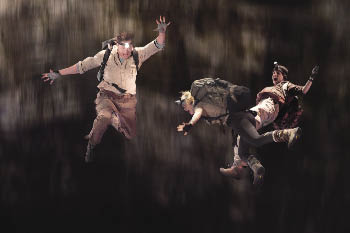| 3D Films Find New Dimensions
By TANG YUANKAI
The first foreign commercial three-dimensional (3D) film – Journey to the Center of the Earth – was shown to the general public in China in 2008, earning RMB 21 million during its premiere week thanks to the novelty of its visual effects. The film went on to bring in a total of RMB 67 million at the box office over the rest of its run. Part of its success may have come from the difficulty of pirating films made using this new technology. The 3D films that followed also saw rewarding box office returns.
 |
|
Journey to the Center of the Earth was the first commercial 3D film introduced into China from abroad. |
Liang Hansen was very excited about such figures. When the domestic animation film market turned sluggish six years ago, Liang set up a studio and led a team of 80 young animators to create his first 3D digitally animated film – Wu Kong and God Erlang – in 2006. Although he found at least 68 deficiencies in his debut work, Liang was able to acquire professional confidence. The film, however, suffered repeated setbacks when it was shown in bigger cities like Beijing and Shanghai, which forced him to create a means of "self-distribution" – he would personally deliver the prints to each cinema and negotiate with them one by one. The resulting figures fell far short of his expectations.
Now that a profitable 3D film market has blossomed, Liang has become even more focused on his ambition. This was especially true after hearing the news that Disney Pictures would no longer produce traditional 2D animation. Liang knew that "3D film had become the mainstream."
| 